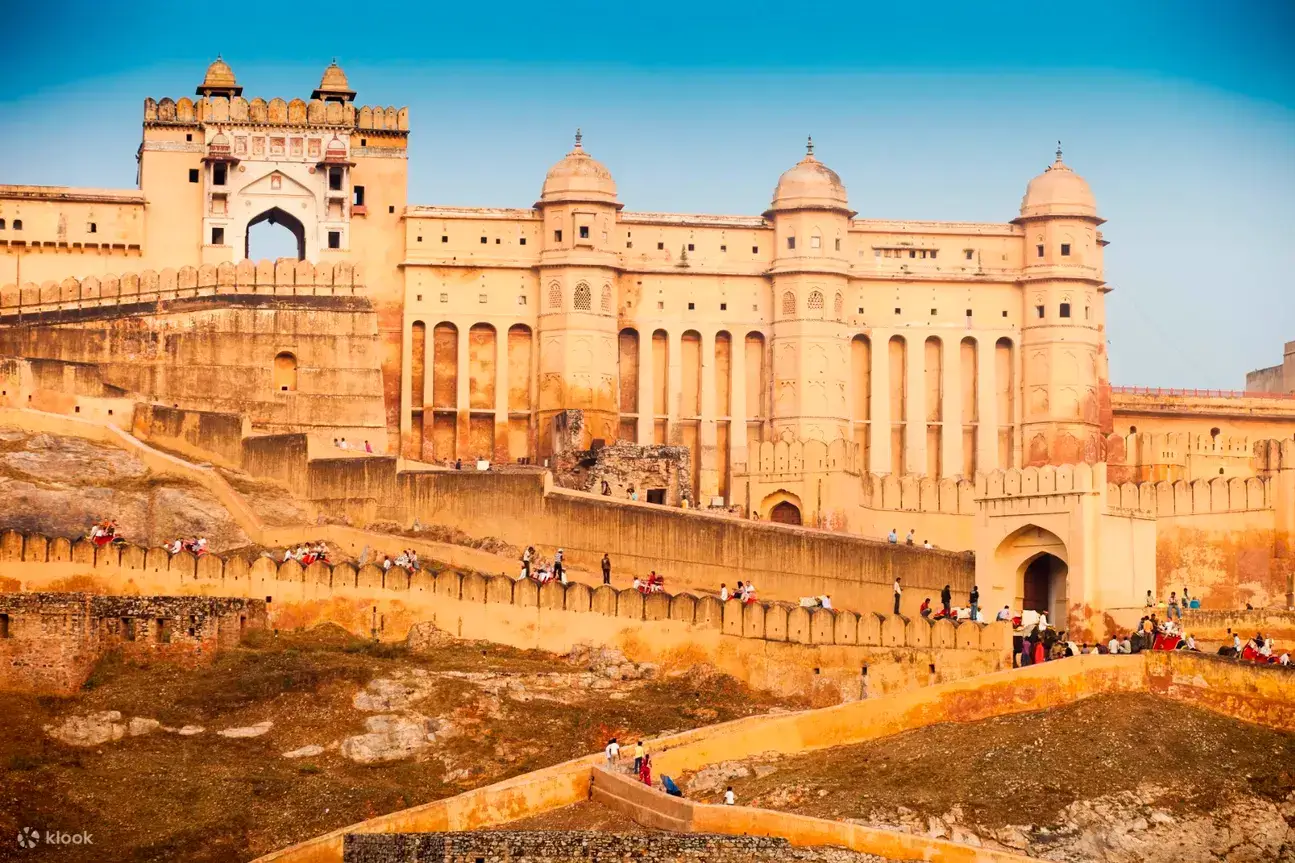Amber Palace (16th Centu)

Title: Amber Palace
Location: Jaipur, Rajasthan, India
Year of Construction: Late 16th century
Description: Amber Palace, also known as Amer Fort, is a majestic historical fortress situated in the picturesque city of Jaipur, Rajasthan, India. This splendid architectural marvel is renowned for its grandeur, intricate craftsmanship, and panoramic views of the surrounding landscape.
Rajput Architecture: Amber Palace exemplifies the exquisite Rajput architecture, characterized by its elaborate frescoes, delicate mirror work, and ornate marble carvings. The fusion of Hindu and Mughal design elements is evident in the blend of red sandstone and white marble used throughout the palace.
Strategic Location: The fort is strategically positioned on a hilltop, offering both a strategic advantage for defense and a captivating view of the Maota Lake and the rugged Aravalli Hills.
Sheesh Mahal: The Sheesh Mahal, or Mirror Palace, is one of the main attractions within the complex. Its walls and ceilings are adorned with intricate mirror work, creating a stunning display of reflections when illuminated by candlelight.
Diwan-e-Khas: The Diwan-e-Khas, or Hall of Private Audience, is a lavishly decorated hall where the Maharaja would hold private meetings with his ministers. Its central pillar showcases impressive sculptures and marble inlays.
Ganesh Pol: One of the most iconic gateways in the palace is the Ganesh Pol, adorned with beautiful frescoes and sculptures. It is named after the Hindu deity Lord Ganesh and serves as the entrance to the private palaces of the royal family.
Sukh Niwas: The Sukh Niwas, or Hall of Pleasure, is known for its innovative ventilation system, which circulates cool air through its water channels, providing relief during hot summers.
Light and Sound Show: Amber Palace hosts a mesmerizing light and sound show in the evenings, narrating the history and legends associated with the fort, creating a captivating experience for visitors.
Elephant Rides: To reach the entrance of Amber Palace, visitors can opt for a traditional elephant ride, adding an enchanting touch of regality to their experience.
UNESCO World Heritage Site: In recognition of its architectural significance and historical importance, Amber Palace was designated as a UNESCO World Heritage Site as part of the Hill Forts of Rajasthan.
Tourist Attraction: Amber Palace is a major tourist attraction, drawing travelers from around the world who come to immerse themselves in the rich history and royal legacy of Rajasthan.
Cultural Events: The palace occasionally hosts cultural events, including dance performances and music concerts, providing a glimpse into the vibrant cultural heritage of the region.
Preservation Efforts: The Indian government and local authorities undertake regular conservation and restoration efforts to preserve the splendor and integrity of Amber Palace for generations to come.
Conclusion: Amber Palace is a captivating blend of history, architecture, and artistic brilliance, offering visitors a glimpse into the opulence and grandeur of the bygone era. With its majestic fortifications, opulent interiors, and breathtaking views, the palace continues to stand as a symbol of Rajasthan's rich cultural heritage and serves as a must-visit destination for travelers seeking a journey back in time.
